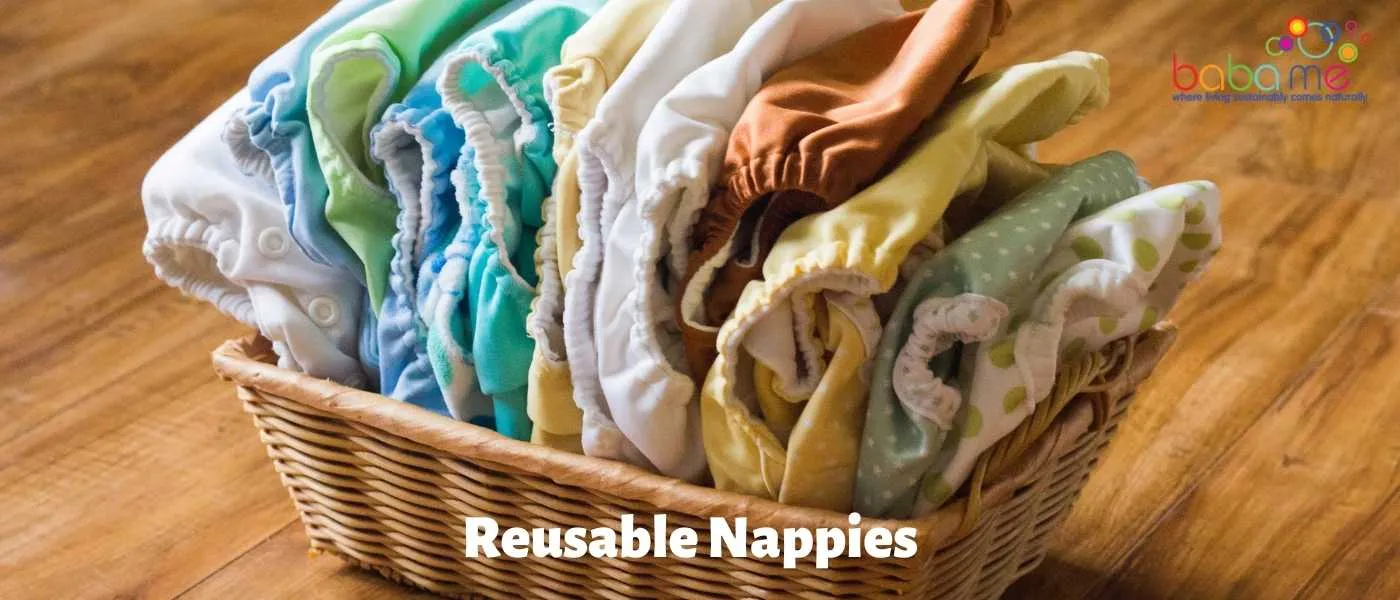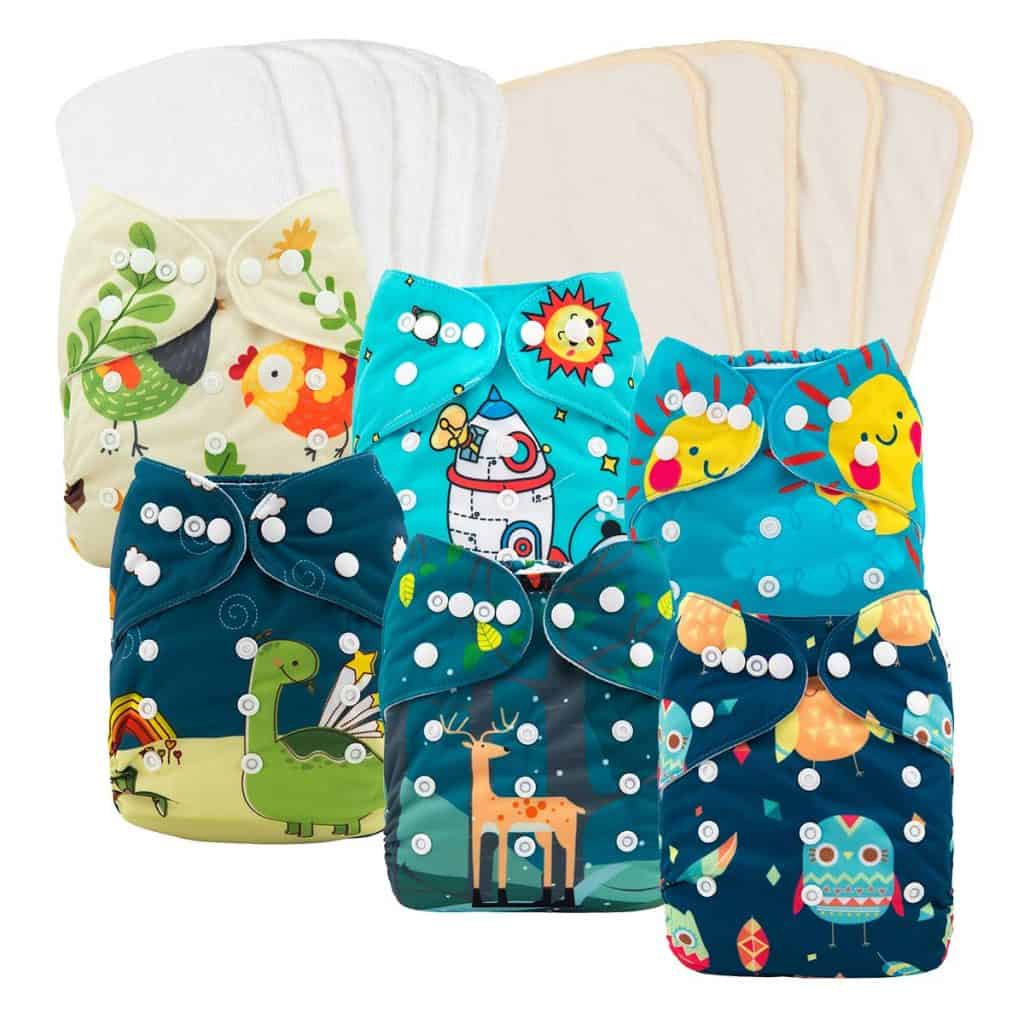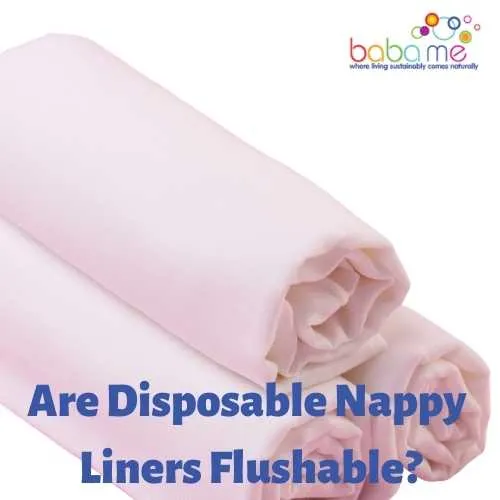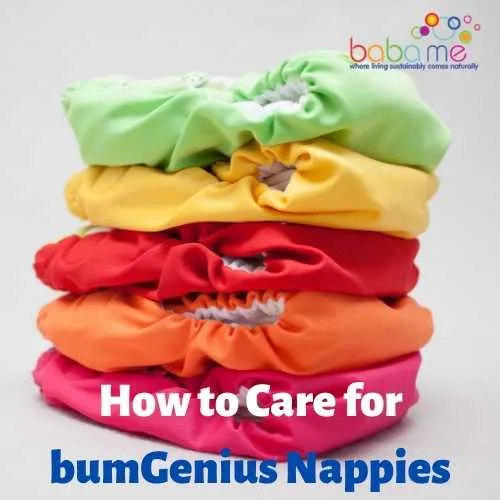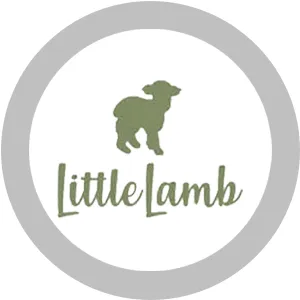For decades we have been helping hundreds of families just like you to find the perfect cloth diapers and accessories for them, their child & their lifestyle.
Over the years we have tried and tested every cloth nappy there is, and our experience leads us to believe passionately that there is a cloth nappy system out there to suit every family. Let us take the stress out of learning with this easy guide for beginners.
If you are new to using reusable nappies, you probably have a lot of questions and that’s ok- We’re here to provide you with all the information you need to get started.
Pros and Cons of using Cloth Diapers
As with anything, there are pros and cons with reusable nappies but once you consider the fact they are environmentally friendly and kind to baby’s skin hopefully the pros will win.
Cloth Diaper Pros and Cons
These pros and cons will help you examine whether cloth diapering is the best option for your family.
Pros
- Environmentally friendly – Chuck cloth diapers in the washing machine, meaning less waste in your bin.
- Cloth diapers can be used for more than one baby.
- Being super soft and free of chemicals they are gentle on baby’s skin, better for avoiding nappy rash, and generally better for babies health.
- Washing cloth diapers is easier than you might think.
- One set can last from birth until your child is potty trained so you save money. Although you may prefer to start with velcro newborn varieties if you have a tiny baby.
- Cloth diapers are less prone to leaks meaning fewer dirty baby grows. Insert absorbent hemp or bamboo boosters for heavy wetters and don’t risk interrupting baby sleep.
- Choice – the range of designs and colours makes nappy changing pretty. You can also choose the insert fabric if you prefer to avoid synthetic fibres.
Cons
- You have to wash them. This can be tricky on holiday or if your washing machine breaks which is why we recommend the flip disposable inserts.
- Not everyone will get on board
- They are so pretty that buying them can be addictive.
- All in ones can take a long time to dry
- The fit is generally bulkier than a disposable so your little one will need to wear clothes that suit cloth diapers.
- You may need a separate stash for the newborn stage.
Which Reusable Nappy Is Best?
As with so many things there is no one size fits all when it comes to cloth diapers. Choosing the perfect reusable nappies isn’t just about picking your favourite prints for those delicious cloth bum pictures.
There are so many brands out there, as well as different systems, and different nappies work for different people, both practically for parents and carers and fit wise for babies.
When choosing your cloth diapers it’s well worth looking at a few different brands and considering whether you prefer the sound of a one-piece (all-in-one) system or a system that utilises a waterproof outer (nappy cover) and a variety of styles of absorbent inner nappies.
We would recommend trying a few different brands or styles before you put all your eggs in one basket so to speak.
It’s well worth checking to see if you have a local nappy library, there are lots about, and loaning a few different styles of nappies, or buying a few different styles/brands if nothing immediately jumps out at you.
And finally if you are new to cloth diapers and find they aren’t working for you as you thought might don’t give up just yet:
- Leaks can happen for a number of reasons most of which are easily solvable. You may need to change your washing routine (you might just not have pre-washed enough), you might need to add more absorbency to the reusable nappy, you might need to change where you position the absorbency, or you may need to find a reusable nappy more suited to the shape of your baby.
- If your nappies seem to be taking forever to dry and you just can’t keep up you might need to choose a different style of cloth diaper. All in one nappies are wonderfully simple to use but can take longer to dry than foldable inserts that take about as long to dry as a pillowcase.
- If you love using your reusable nappies at home but find them a hassle when you are out and about or don’t have supportive childcare, an all-in-one like Bambino Mio or Bumgenius can make all the difference.
Bumgenius cloth diapers
Bumgenius cloth diapers are famous worldwide and for good reason. Their all in one birth to potty nappies are about as close to a disposable as it gets when it comes to ease of use, and yet so much better than disposable nappies in so many ways.
The liners are attached but only at one end so you can open out to dry dramatically reducing drying times. The soft elastic is great for containing the mess and preventing leaks, and you can add additional boosters to increase absorbency at night or for heavy wetters.
Flip reusable nappies
We love love love Flip at Baba Me, in fact, we helped design the system so we hope you like it too. Flip is such a versatile system because you can mix up the inserts and tailor them specifically for your needs while using the covers up to 5 times each. The flip system dries quickly and is easily boosted for a heavy wetter.
Flip even makes disposable inserts which are perfect if you’re going on holiday somewhere without a washing machine, or just really need a break from the laundry for a few days. And if you get really stuck you can fold up a tea towel or even a t-shirt.
Little Lamb Nappies
Little lamb is a well known brand of cloth diapers that is affordable and offers a great range. We particularly like their inserts and boosters that can be used with other brands as well.
Their fitted cloth diapers are the most popular in their range, and we can see why- the bamboo fitted diaper is an incredibly absorbent reusable nappy, considered especially great for breastfed babies who can be prone to poo explosions.
The Little Lamb fitted diaper is also available in cotton- but whichever you choose, don’t forget that you need to pair a fitted diaper with a waterproof cover to keep baby dry!
They have velcro fastening which makes them a great option if grandparents or anyone with arthritis in their hands will be changing baby. Little Lamb offer one size options as well as different sizes.
Petit Lulu Snap-in-one Nappies
Petit Lulu makes incredibly beautiful and practical nappies that use a fantastic snap-in system. Which combines the ease of use of an all in one with the versatility and quick-drying capability of a two-piece system.
And we love that they make cloth sanitary pads for mummy too, as well as makeup pads, breast pads and the most gorgeous reusable wipes.
Two-Part or One Part Reusable Nappy System?
In order to find the best reusable nappy for you and your baby firstly decide if you would like a two-part system or a one-piece pocket nappy system.
Two Part Nappy Systems
Two-part systems have an inside absorbent layer which you cover with a waterproof layer or wrap. One of the benefits of the two-piece system is that you only have to change the absorbent part without changing the waterproof outer wraps each time. The inserts often unfold making them quick drying which is great if you have limited space.
If you are looking for the most absorbent reusable nappy, two parters are well worth considering. Even a very heavy wetter will struggle to wet through a well boosted two part system!
Fitted Nappies & Wraps
Two piece nappy systems include everything from the old fashioned terry nappies, flat nappies, prefolds, fitted nappies and nappy wraps. A two-piece system basically means you have an inner absorbent bit, which may be fitted and shaped or pad shaped, and an outer nappy wraps or cover. Whilst terry squares are technically still available, the modern equivalent of hemp babies bigger weeds nappies and flip nappy inserts are much easier to use.
Two piece nappy systems you need to buy your inner absorbent cloth diaper, whether its a pad, prefolds or fitted nappy, then combine with your waterproof nappy wraps. You can mix and match your nappies and nappy wraps, the same brands do not need to stay together. So, for example, your flip can be used over your little lamb fitted nappy.
Modern Nappies & Wraps – Wrap your babies in style!
Today’s reusable systems are a far cry from terry nappies and terry flat nappies of the past. Today’s eco modern cloth nappies and really not much more difficult to use than disposable nappies. Two parters will feature a separate waterproof wraps and an inner cloth bit made from absorbent material.
The absorbent material on the inner can be made from anything really, bamboo, hemp, organic cotton or a mix. Nappy Boosters can be added to keep heavy wetters dry and the waterproof nappy wraps (outer layer) can be used more than once.
In general, you can reuse the nappy wraps 2-3 times before you pop them in the washing machine leaving more space in your nappy wet bag. For a full nappy kit, you will need about 20 nappies, 5 nappy wraps, a couple of wet bags and other accessories. A stay dry liner if you want to keep baby dry and not feel wet.
A liner will catch any solids which you then flush down the toilet. When using waterproof nappy wraps you can wipe clean between changes. It is really very easy to use flats, you can just fold them into place.
A good kit will include a mix of all types including flats and fitted and maybe even terry squares! A wet dry wet bag will have a pocket to keep clean and a lined bag for dirty nappies.
One Piece Nappy Systems
One piece systems are super easy just like disposables, put them on and go! A pocket nappy is a great way to transition to cloth and especially good for getting child carers, grandparents, etc on board as changing all-in-one nappies is almost exactly the same as a disposable.
A pocket nappy normally includes one or two inserts during the day but can also be easily boosted for night time or heavy wetters.
All-in-one cloth Nappies (AIO) are the ones that are exactly ‘what it says on the tin’. They’re all in one. They are often more trim that two part systems, making it easer for beginners to get a snug fit for their little one
In appearance, these are the closest to disposable nappies, which often makes them particularly attractive to parents. True AIO’s don’t require any stuffing, whilst a pocket diaper, which fall within one piece cloth nappies, do require to be stuffed prior to use.
- All-in-One Nappies – Simple Cloth Nappy Systems!
- Is BumGenius the Best AIO Nappy System?
- Are Pocket Nappies an AIO Sytem?
- How to Select the best Nappy kit for your baby
- Everything You Need for your Eco Cloth System Kits
All-in-One Nappies – Simple Cloth Nappy Systems!
We love one piece cloth nappies at Baba Me. Just like disposables, you change the entire piece at change time. There is no separate waterproof wrap, it is sewn into the all in one. In this section, we include all types of one piece systems, including all in ones, aios, hybrids & pockets.
Is BumGenius the Best AIO Nappy System?
BumGenius has dominated this market since its launch in 2006, and with good reason. Their stretchy tabs expand and fit perfectly around your baby, providing a super fit, making this a star choice!
You can choose their organic nappy, the elemental or the stay dry which wicks the wet away, the freetime. Or their Littles nappy for your newborn. Is it the star? Yes, probably. If Carlsberg made nappies, they would make bumGenius!
Are Pocket Nappies an AIO System? What’s the story?
Pocket nappies, once they are made up go on your baby as a one-piece, being changed all at once when your baby has wet or soiled their diaper.
However, you do have to prepare these to make them an AIO, by putting their inserts into the pocket part. Once they are prepared, they are a one-piece system. Hence why they are included here and not listed elsewhere. We like to keep things real easy!
Two-Size or Birth to potty nappies?
When choosing reusable nappies you can consider whether to choose a birth-to-potty reusable nappy or opt for two-size nappies.
This is a personal choice for parents based on cost. Onesize nappies will work out more economical for one child, however, if you plan to have several children then you may be better off going for a two-size system as they will hold up better for future children.
Also, babies do not need as much absorbency as older children, so you might want different nappies for different ages. Most brands and nappies will show their absorbency rating, but overall bamboo and organic cotton would be considered the most absorbent, whilst microfibre generally have the least absorbency.
You can always increase absorbency by increasing the inserts or boosters that you put inside the nappy.
Drying Time of Cloth Nappies
Next, decide if you want natural fabric or quick-drying fabric. All-in-one shaped nappies tend to take longer to dry
We recommend 20-25 nappies for full-time use and washing every 2 days.
- Cloth Nappies
- Your local cloth nappy company or cloth nappy library should have some of the best nappies on the market. Don’t feel that you have to commit to one brand.
- We have an extensive collection of blog posts to arm you with everything you need to know about cloth nappies.
Reusable nappies can be used from birth to potty training, as they are adjustable as the baby grows, meaning that despite the initial outlay they will actually save you money compared to disposables.
Remember: you don’t need to make the switch all at once if you can’t afford it, every disposable you don’t use makes a difference to the environment, so you could start off just using them at home until you get used to them and how best to wash them, etc.
Other FAQ
Can You Wash Reusable Nappies With Clothes?
Many parents that are new to using cloth nappies are a bit confused on how to get started in washing them. And one of the most asked questions is if you can throw your cloth nappies in with clothes. The answer is yes. Sure, you can wash your cloth nappies with clothes as long as you take a few sensible precautions.
For example, don’t use fabric softener when washing cloth diapers as this will reduce their absorbency- a simple bio detergent powder is best. You should always try to remove all solids from the diaper before you add it to your wash.
How Do I Wash Cloth Diapers?
If you are going to run a specific cloth diaper wash, we would recommend an initial rinse to get rid of the worst of the urine and traces of faeces.
Next, run a long hot cycle. Check the warranty of your cl0th diaper brand, but we would recommend washing at 60 degrees. You will want a 2-3 hour long cycle.
Finally, run an extra rinse cycle at the end to get rid of detergent residue
What’s the difference between an insert and a liner?
A diaper insert is absorbent element, often made of bamboo, hemp, cotton or microfibre, with bamboo and microfibre being the most popular options.
Hemp and cotton would be natural options, while microfibre is synthetic. You will often see bamboo inserts listed as bamboo rayon, since the level of processing that goes in to producing the bamboo fabric makes it a very different product to its natural form.
A liner separates the diaper itself from your baby’s bottom, wicking away moisture so your baby feels dry. Some parents like to use liners, but they are optional. It’s thought that cloth diapering without using liners can even encourage early potty training.
A disposable liner can help with removal of solids since it can be binned, leaving the nappy fairly well protected from the mess.
Are Reusable Nappies Cheaper Than Disposables?
Yes, cloth nappies are cheaper than disposables. Do not worry about the initial investment required to get started with reusable nappies either. The cost of using disposables can accumulate over time which is the exact opposite of what would happen if you would use cloth nappies.
Furthermore, if you look after your cloth nappies properly and they are well-maintained, they could last many years and you could even resell them to other parents who are in need of reusable nappies if they are still in good condition.
What Are Reusable Nappies Made Of?
There is a wide diversity of materials used in making high quality reusable nappies on the market. Generally, reusable nappies are made of natural fabric like cotton but it could also be made with synthetic materials like polyester. Bamboo is a common option.
Fabric & textiles have changed so much since they were first introduced in manufacturing and many of the improvements that have been over the years were also applied to cloth nappies to make them safer and to improve their absorbency and drying times.
What Do I Need for Reusable Nappies?
Things can be a bit confusing and sometimes difficult at the start of using reusable nappies. The fact that you decided to ditch disposables in favour of cloth nappies is a step in the right direction. Fret not, we’re here with helpful advice to guide you every step of the way.
Aside from your diapers, you may want to consider nappy liners- you can buy washable or disposable liners- extra inserts for boosting, a nappy bucket and a wet bag for on the go use.
How Many Diapers Do I Need?
How many nappies you will need will depending on how often you intend to wash, how you will dry the nappies, if you are using diapers for more than one child, and more! However, most parents choose to have 20-25 diapers for one little one.
Are Reusable Nappies More Environmentally Friendly?
Yes, there is no doubt that reusable nappies are far more eco-friendly than disposables. Much of disposable nappies are made from different kinds of plastic materials and unfortunately, most of these disposables end up in our landfills and oceans.
It would take hundreds, if not thousands of years to break down plastic.
.

Are Reusable Nappies More Environmentally Friendly?
In an age where sustainability and the need to go plastic free is ever present in our lives, this question is often asked as people search to raise their babies in a more natural way.
The quick answer is yes, without a doubt. With an estimated 3 billion nappies hitting UK landfill annually, we now know that these nappies do not break down for up to 500 years.
The fact that ‘disposable’ nappies are anything but disposable and every single nappy you put on your baby will still be in landfill when their great great great great great grandchildren are being nappied, is quite distressing.
Disposable nappies are a single use plastic item. Yes plastic, the outer wrap of a disposable nappy is a form of plastic, made from one cup of crude oil. We have all seen the dangers that plastic is doing to our countryside, our streams, our oceans and our wildlife. Nappies are part of this problem, so it seems a natural progression from reusable cups to switch to cloth nappies.
Meanwhile, an excellent quality cloth diaper can be used again and again before succumbing to wear and tear. The benefits to using cloth diapers are even greater if you intend to use the same nappies on future babies, or pass them along to someone else.
What About Biodegradable Nappies?
The sad fact is, many disposable nappies which claim to be green or degradable are just a green wash and do not meet up to the expectations.
If you look closely at many supermarket ‘eco’ brands, they often claim they are eco friendly just based on the other plastic wrap, not the actual nappies themselves! Clever marketing covers this fact and many innocent consumers may be duped into buying these on false pretences.
The big issue with disposable diapers is their plastic cover, which makes them waterproof. At the time of writing, no disposable nappy company has managed to make this layer biodegradable or even degradable so even if the nappy layers might be made from recycled material and are degradable, this layer is not.
Ultimately, cloth diapering is the best way forward.
Human Waste
The proper way to deal with human waste is in the sewage treatment system.
If you read a disposable nappy packaging, it does tell you that you must flush your baby’s waste down the toilet before putting the nappy in the bin. I have yet to meet ANYONE who does this, which means that human waste is sitting in your bin, then in landfill, not being treated properly and ends up in our water systems.
If you child is on antibiotics or has had vaccines, those live vaccines are making their way into nature, and that’s not good!
What About Carbon Emissions
There has been a lifecycle analysis which looked at this and it proved that washable nappies were 40% better than disposable nappies, provided you didn’t iron them, boil wash or tumble dry on high! Please don’t ever iron nappies… I’ve never met anyone that does.. But ya never know!
However this analysis failed to take into consideration the raw materials used in making disposable nappies, the crude oil and also the carbon emissions used by transporting these materials and then the nappies to their end destination.
Also, it never considered the impact the chemicals in disposable nappies make at landfill. The super absorbent gels absorb moisture around them, even at landfill. By removing the moisture from the waste around them, not only do they not decompose themselves, but they also stop the waste around them from decomposing…
The best reusable nappies won’t just go on one bottom either, but can be passed on to save hundreds of disposable diapers from ending up in landfill.
So yes, reusable nappies are much more environmentally friendly than disposable diapers when all things are considered. They are part of a sustainable plastic free lifestyle that we all need to embrace!
Conclusion and final thoughts 💭
Cloth diapering presents major benefits for your baby’s delicate skin, and also for the environment.
We recommend first deciding what your top priorities are before making the decision. Your local cloth nappy library or retailer should be able to let you see the nappies in the flesh too.
Don’t forget to check out our other blog posts for more helpful advice as you commence your cloth diaper journey.

